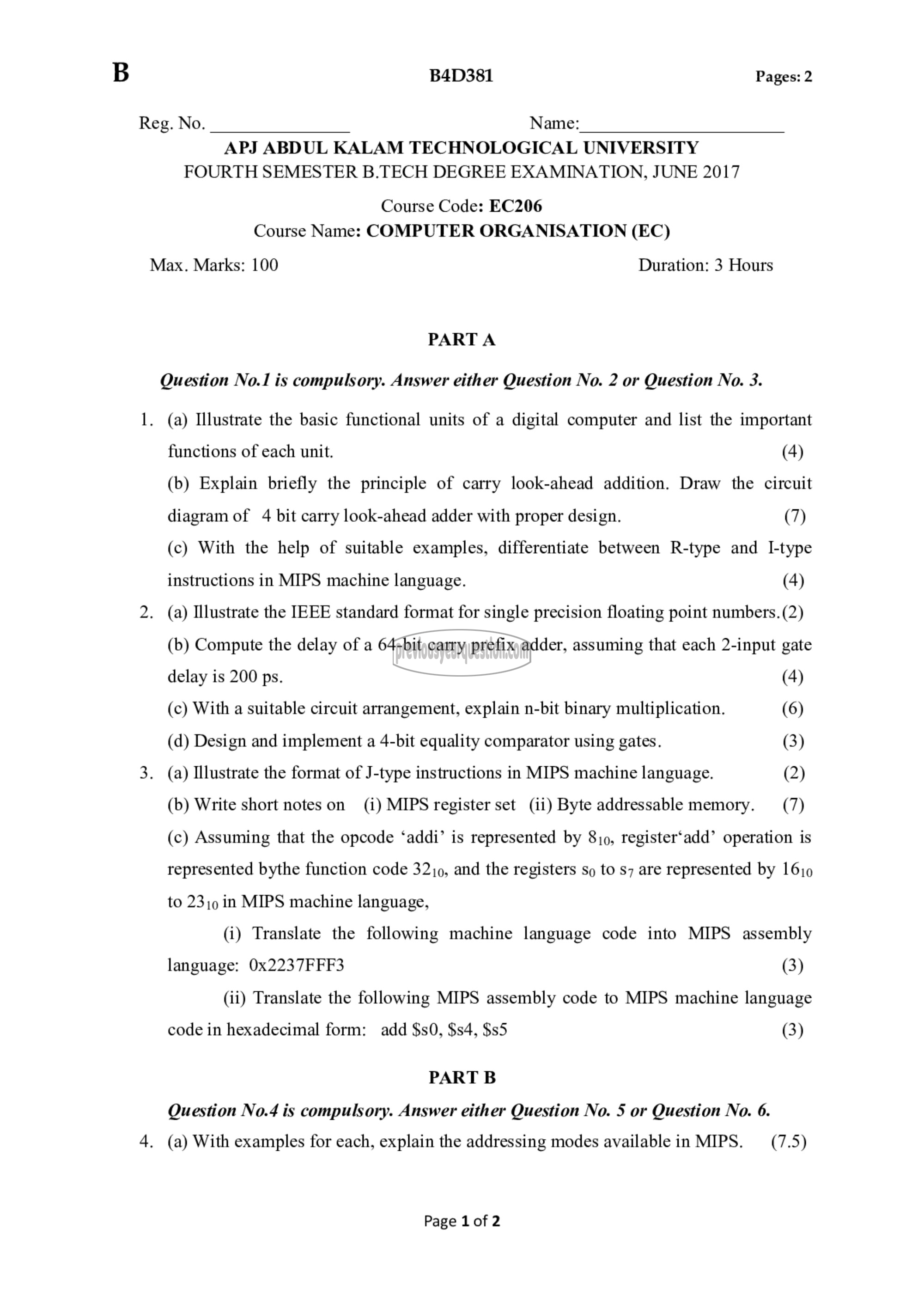APJ ABDUL KALAM TECHNOLOGICAL UNIVERSITY Previous Years Question Paper & Answer
Semester : SEMESTER 4
Subject : Computer Organization
Year : 2017
Term : JUNE
Scheme : 2015 Full Time
Course Code : EC 206
Page:1
B
Reg. No. Name:
B4D381 Pages: 2
APJ ABDUL KALAM TECHNOLOGICAL UNIVERSITY
FOURTH SEMESTER B.TECH DEGREE EXAMINATION, JUNE 2017
Course Code: EC206
Course Name: COMPUTER ORGANISATION (EC)
Max. Marks: 100 Duration: 3 Hours
PARTA
Question No.1 is compulsory. Answer either Question No. 2 or Question No. 3.
. (a) Illustrate the basic functional units of a digital computer and list the important
functions of each unit. (4)
(b) Explain briefly the principle of carry look-ahead addition. Draw the circuit
diagram of 4 bit carry look-ahead adder with proper design. (7)
(c) With the help of suitable examples, differentiate between R-type and I-type
instructions in MIPS machine language. (4)
. (a) Illustrate the IEEE standard format for single precision floating point numbers. (2)
(b) Compute the delay of a 64-bit carry prefix adder, assuming that each 2-input gate
delay is 200 ps. (4)
(c) With a suitable circuit arrangement, explain n-bit binary multiplication. (6)
(d) Design and implement a 4-bit equality comparator using gates. (3)
. (a) Illustrate the format of J-type instructions in MIPS machine language. (2)
(b) Write short notes on (1) MIPS register set (ii) Byte addressable memory. (7)
(0) Assuming that the opcode ‘addi’ is represented by 810, register‘add’ operation is
represented bythe function code 3210, and the registers 50 to 57 are represented by 1610
to 2310 in MIPS machine language,
(i) Translate the following machine language code into MIPS assembly
language: 0x2237FFF3 (3)
(ii) Translate the following MIPS assembly code to MIPS machine language
code in hexadecimal form: add $s0, $s4, $s5 (3)
PART 8
Question No.4 is compulsory. Answer either Question No. 5 or Question No. 6.
4. (a) With examples for each, explain the addressing modes available in MIPS. (7.5)
Page 1 of 2
